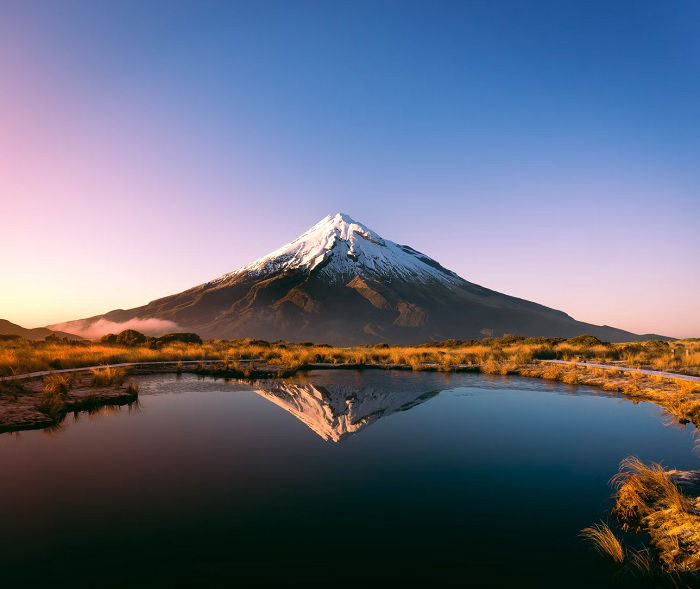If you are into landscape photography, you might have already questioned waking up early to take sunrise photography.
These are the times you should remember the joy of adventure and how rewarding sunrise photography actually is.
Read on to learn how to take sunrise photos that are worth waking up for.
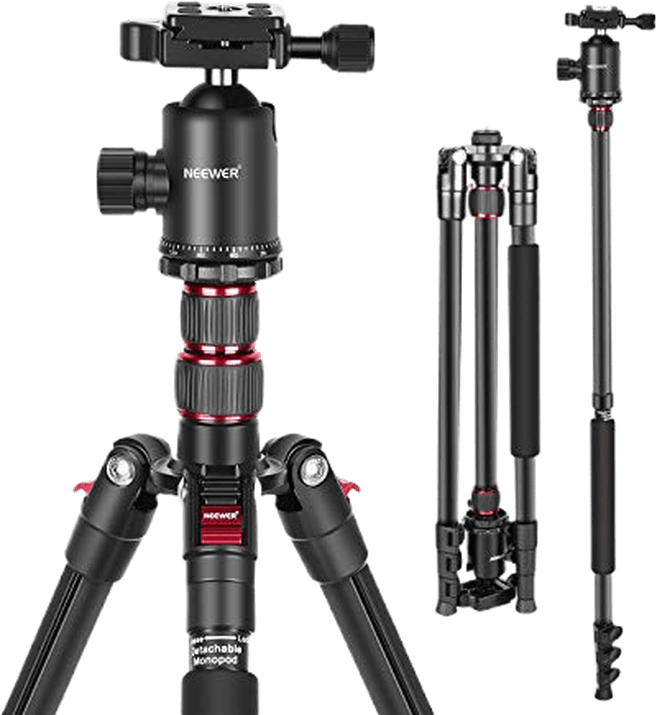
Many people ask me, “Why the sunrise, can’t I just do a sunset instead?” Of course, you can. But there is one massive difference between the two. And it’s an unbeatable argument in favor of sunrise for me.
When you photograph in the evening, there are lots of people around. They keep walking into the frame and distract you in so many ways.
During the sunrise, you get alone time with nature. You can focus on your thoughts and feelings and express yourself better. Also, the golden hour sticks around longer than the blue hour.
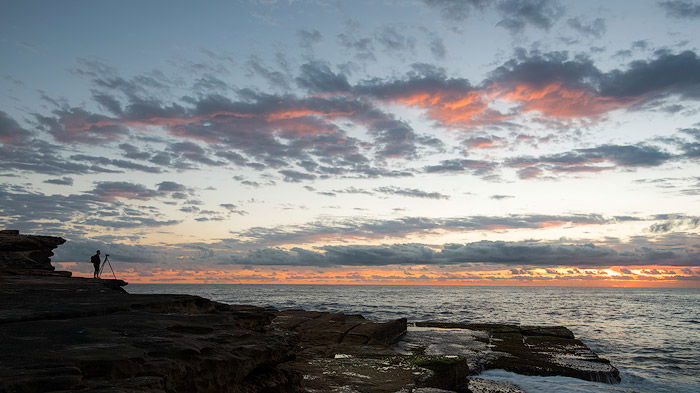
So, you’ve decided to wake up early. Now it’s time to prepare. I recommend getting ready the night before. This way, you’ll get an extra 10 minutes of sleep. You’ll also reduce the chances of forgetting something important.
Don’t forget to plan ahead and take the right equipment.
Here is a list of sunrise photography essentials to pack in your backpack:
Everything else is either optional or depends on the scenery and weather.
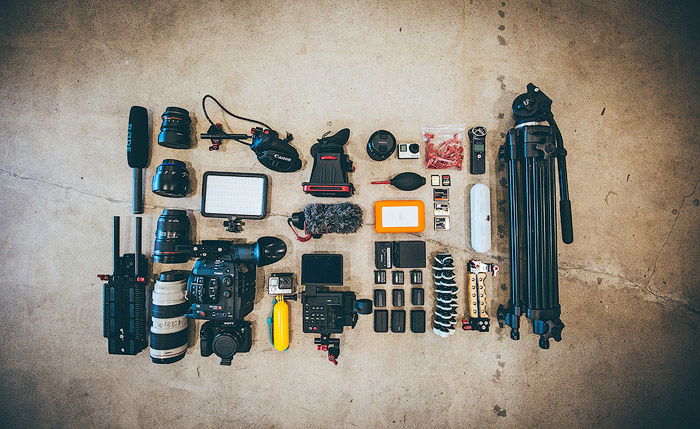
As the saying goes, the best camera is the one you have on you. This is true to some extent. So, if you already have a decent camera, invest in higher-quality lenses.
If you are a new buyer, here are a few things to consider:
Your tripod needs to be sturdy and balanced. It should be able to hold your camera even when it’s windy. If you go hiking, your only option to reduce weight is to get a carbon fiber tripod—but it comes at a cost.
I prefer Manfrotto tripods, they have always been great with zero issues. As with any other piece of equipment, if you shoot seascapes and are near saltwater and salty air, always clean your equipment thoroughly to prevent corrosion.
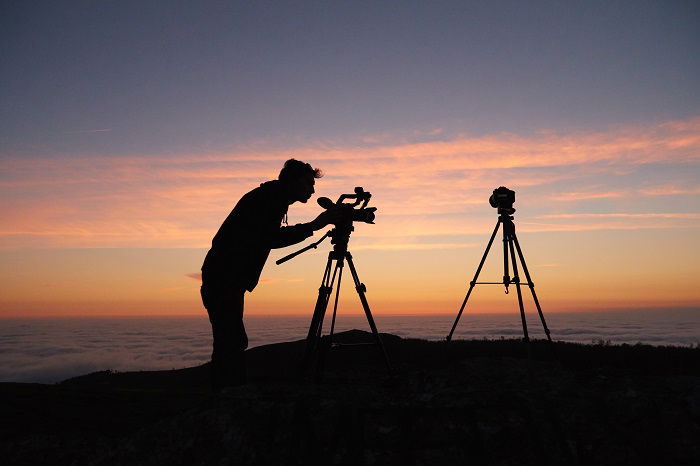
There are no strict rules about lenses, and you can get away with most focal lengths. Typically, photographers prefer wide or ultra-wide angles as their primary lens. I recommend having the whole range covered. A wide-angle lens, mid-range zoom, and telephoto is an ideal setup.
If you are just starting out, you could get away with some general-purpose lenses like an 18-105mm lens. With this type of lens, you will learn how to use different focal ranges and better understand what works for your style.
Here are a few recommendations:
APS-C:
Full Frame:

Sunrise photography is all about light. And, as we all know, light depends on the weather to a great extent.
You need to learn how to plan the best sunrise landscape shots. I typically prefer a partly cloudy sky. I wouldn’t bother with less than 30% cloud cover for a general sunrise landscape.
Of course, there are different scenarios. For instance, for a waterfall or a forest, I prefer a clear sky to increase the chance of sun rays beaming through the trees.
To figure out how early I have to get up, I use The Weather Channel. This shows hourly cloud coverage, so it’s easy for you to plan.
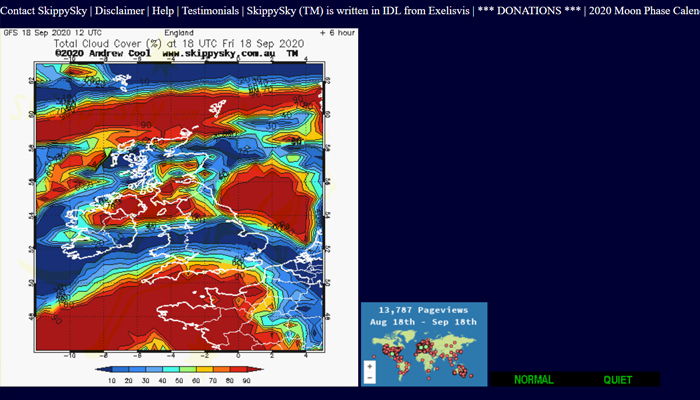
All in all, you can never be 100% sure about and have to try it out to see if it works.
The wind can also affect certain types of landscapes. Or your safety! Don’t go to the edge of a cliff if there’s strong wind.
Foggy weather can also be an advantage. Photographing a forest covered in fog will produce unique and dramatic-looking images.
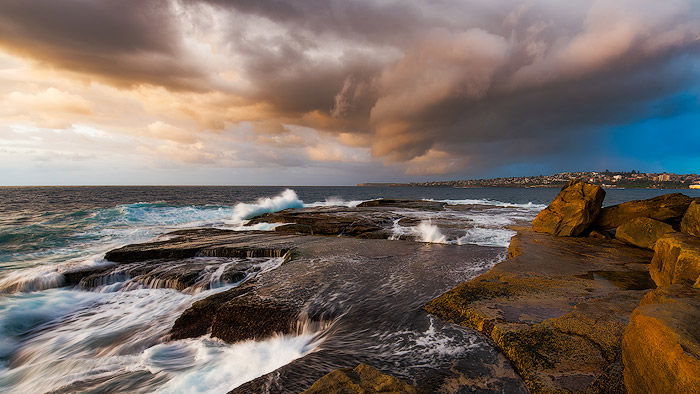
I usually start by looking at Google Maps. I search “[area name] sunrise” or something similar.
Once I find some east-facing area, I look for photos in Google Images, 500px, and other sites that show a shot location. This search gives me a general idea of what to expect from the area.
The Photographer’s Ephemeris app is also helpful for checking a location. You will see how light falls on a chosen spot almost anywhere on Earth.
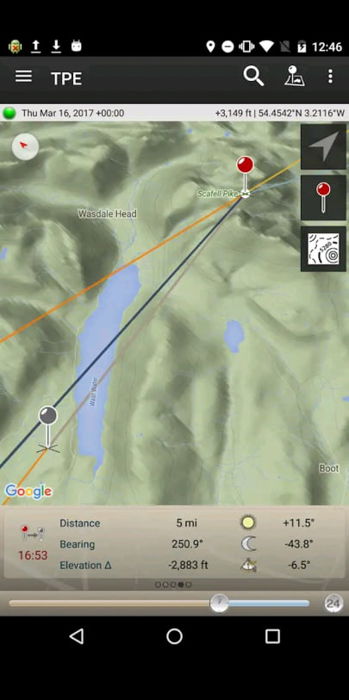
The best way to prepare for a new area is to scout it before sunrise. In darkness, it could be hard to find a path, measure distance, or see potential shooting spots.
If you get a chance, walk around the day before and take notice of the best vantage points. Use some virtual reality app like Photopills to see the Sun/Moon/Milky Way positions for your future shots.
Typically, you must arrive well before sunrise for several reasons.
First, you’ll have the ability to shoot a long-exposure shot. Second, you’ll have some time to get your equipment ready.
The first light appears about 30 to 40 minutes before sunrise. But you can start creating long-exposure photos even earlier than that. I’ve seen clouds painted red 60 minutes before dawn. Remember that all faint colors will turn vivid and juicy in the final shot.
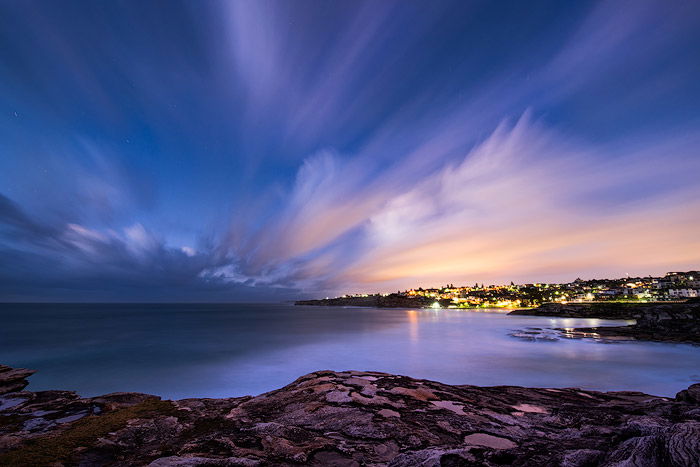
There are a few ways to focus your camera in the middle of the night. But the easiest way is to use your headlamp or a flashlight.
Pick an object around the hyperfocal distance, illuminate it with your flashlight, then lock the focus and shoot.
These are the steps you need to follow:
Be sure to change back to the Autofocus mode once you zoom in or out because of the focus breathing effect.
The pre-dawn period works best for long exposures, and that’s a great reason to arrive early. The longer the exposure time, the more movement you can catch.
Typically, in total darkness, 60+ minutes before sunrise, you could use a shutter speed anywhere from a couple of minutes for f/8 to 10 minutes or more for f/16.
Use your judgment and sense of beauty to determine how long you need to expose the photo. The most common subjects for long-exposure sunrise photography are clouds and water.
This is the time when using a neutral density filter is crucial. They reduce the amount of light that is hitting the camera sensor. This allows you to shoot long exposures without overexposing the picture.
For the sky, you can expose as long as you like, and the clouds will just turn into trails. For water, it’s not as simple. Relatively calm water (river, lake) just smooths out with time and becomes perfectly flat with a shutter speed above 30 seconds.
Restless water, like the sea or the ocean, can turn into a fog-looking effect.
You can find tons of useful tips on how to shoot long exposures in our course Infinite Exposures.
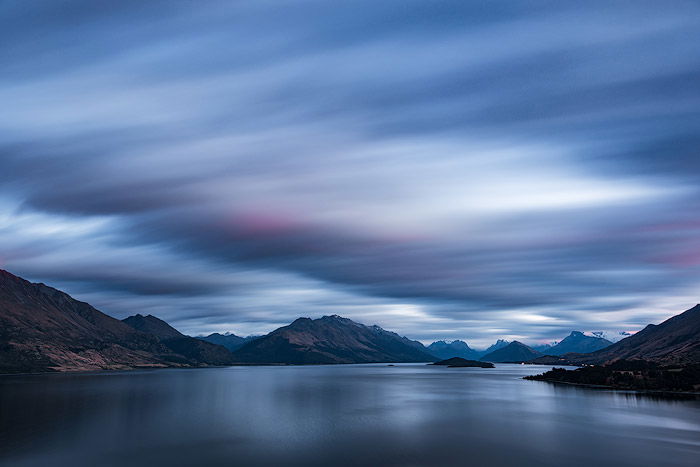
If you only take long exposures, you are limiting yourself to just one technique. By shooting short exposures, you can also freeze an interesting moment in time.
My best advice here is to keep experimenting, and keep trying different approaches and styles.
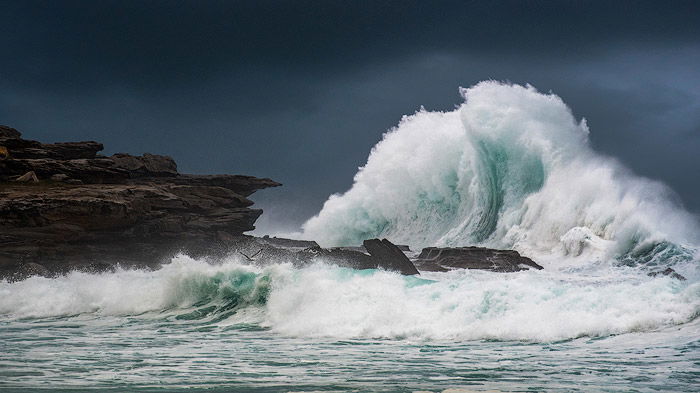
Photographers must understand, appreciate, and work with light to make the best of it.
Let’s say you envisioned a photo, but the light is entirely different from what you expected. Don’t be stubborn! Be flexible instead. Adjust to the lighting conditions, and work with the current state of nature. Learn to quickly change the whole course of the morning and adapt to the environment.
It’s best to photograph with the light source on the side or in front of you. The sun behind the photographer is the worst case as it fills in and hides all the details and textures.
You’ve probably seen those starburst rays coming from the sun. It’s hard to believe how easily you can achieve the same effect. Without going deep into the theory and the structure of aperture blades, below are a few steps to create a starburst effect.
Make sure you clean your lens properly. Otherwise, you’ll get ugly flares, which are hard to deal with in editing.
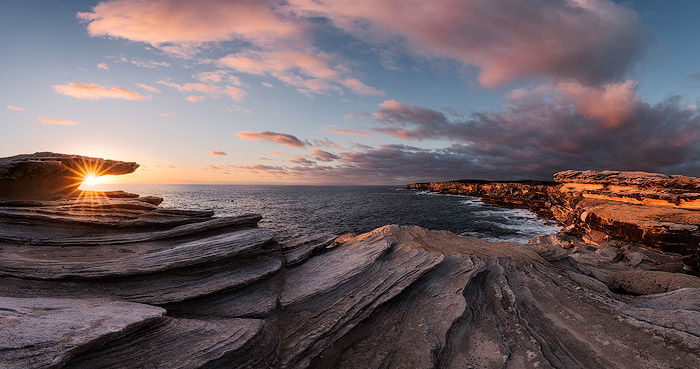
Golden hour is a period of the day with the best light. It starts right after sunrise and lasts for about an hour. Usually, it’s warm and bright and casts long shadows that feature all the textures.
It’s best to photograph with the light source on your left or right so that the shadows are the longest and the land’s features are most prominent.
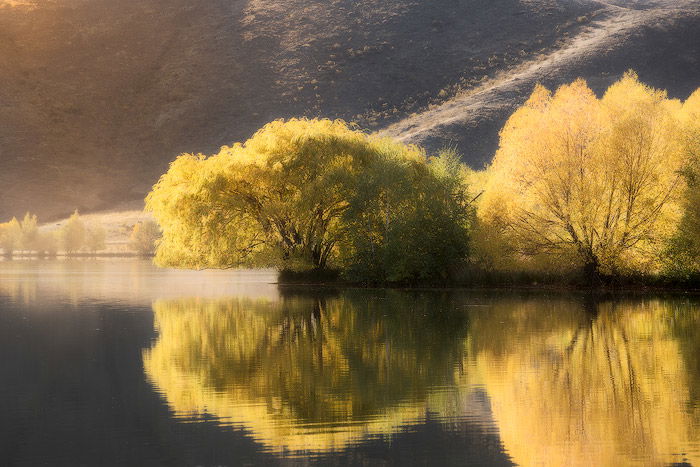
For sunrise photography, you need a solution that fixes the contrast between land and sky exposure. The sky is typically much brighter. This results in either an overexposed sky or underexposed land.
To alleviate this issue, you have two options:
Personally, I prefer the latter because filters have some disadvantages. First, they may have a color cast. Second, you need to carry a whole bag of filters. Third, it takes time to change the filter, and you may lose the moment.
Here’s our full article on how to use bracketing in photography.
As with any other type of landscape photography, you typically shoot in either Manual mode or Aperture Priority mode. For landscape, you need a deep depth of field that focuses on as much area as possible. That’s why it’s best to set the aperture to at least f/8—but I recommend going with f/11 to f/16.
Don’t go higher than that because you will start losing sharpness due to lens diffraction. In fact, some lenses start to get diffraction even at f/16. You’ll need to test and compare results.
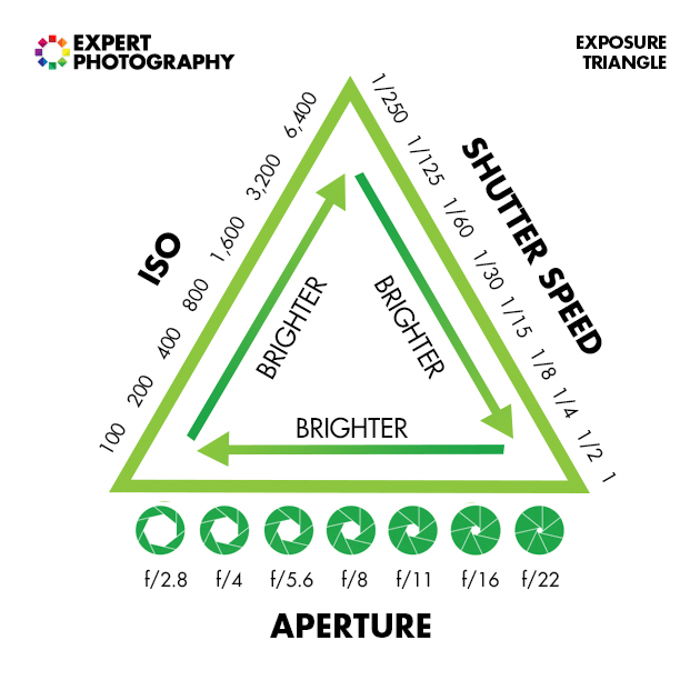
The shutter speed is a variable here, and it depends on the surrounding conditions. When you just start shooting 60 minutes before sunrise, the shutter speed at f/8 could easily reach 5 minutes.
Pro tip: To get shutter speeds longer than 30 seconds, you would need either a cable release or remote control for your camera. Set the camera to Bulb mode, fire the button, and press it again once the time lapses. The other way is to use the Wi-Fi module that appears in most modern cameras.
As the ambient light becomes stronger, the exposure time decreases gradually. You need to learn what shutter speed you need for specific situations to make them look great. It’s best to adjust your settings accordingly.
Every camera handles ISO differently. So it requires some experimentation to determine the maximum ISO you can get away with. Please note that darker photos with a high ISO will produce more noise than adequately exposed pictures with the same ISO level.
In fact, you only need to manipulate ISO for the sunrise when there are some moving objects, like waves or birds. In all other cases, you can keep it at 100. I also recommend keeping it as low as possible for long exposures. Otherwise, it would produce a lot of extra noise.
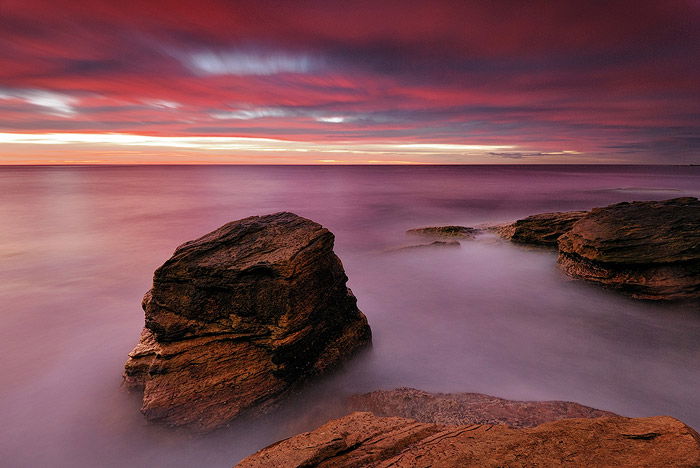
Sunrise is the most magical time of day when you can fully connect with nature. Even though there are many things you need to pay attention to, the magical atmosphere you can capture is always worth the effort.
Set your next alarm clock early and try it out! The tips above will help you to take stunning sunrise photos.

